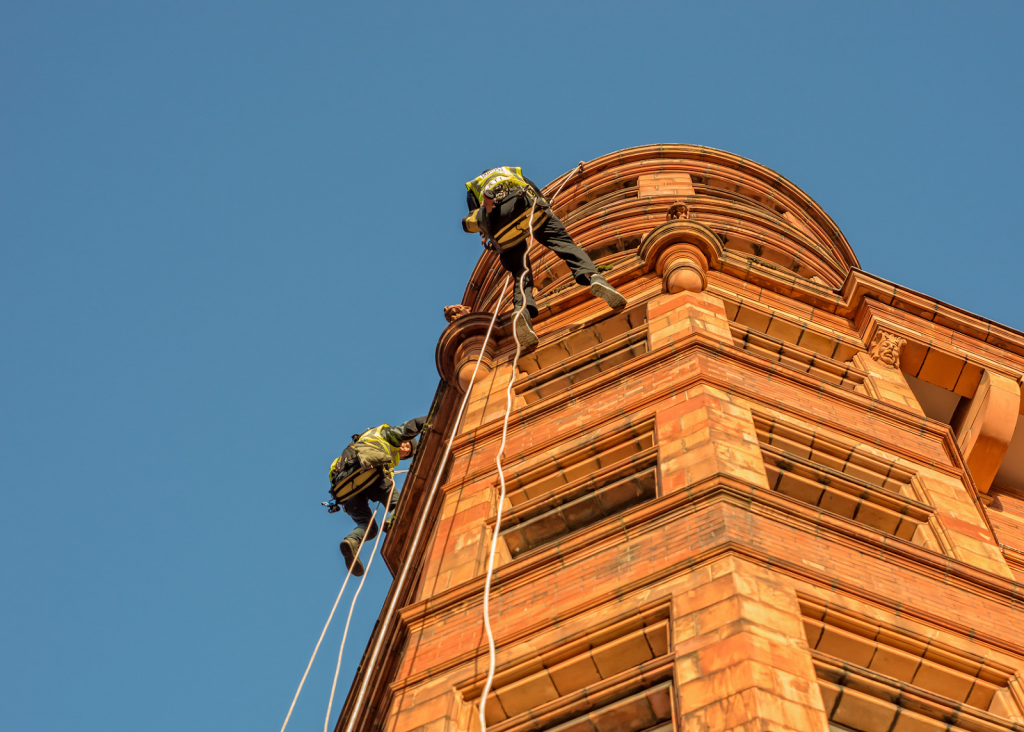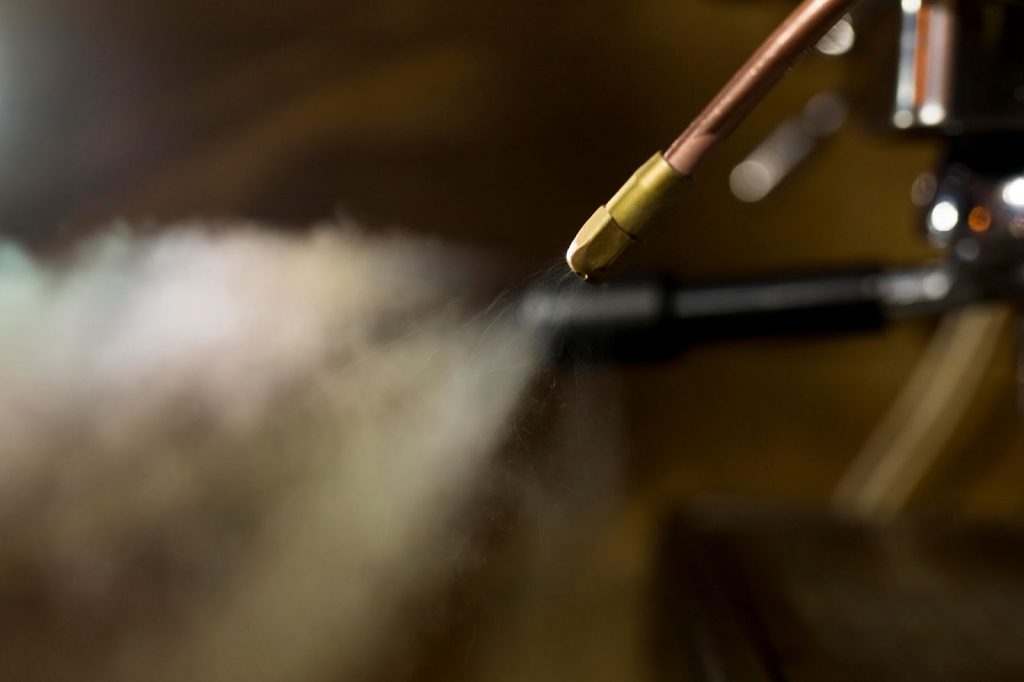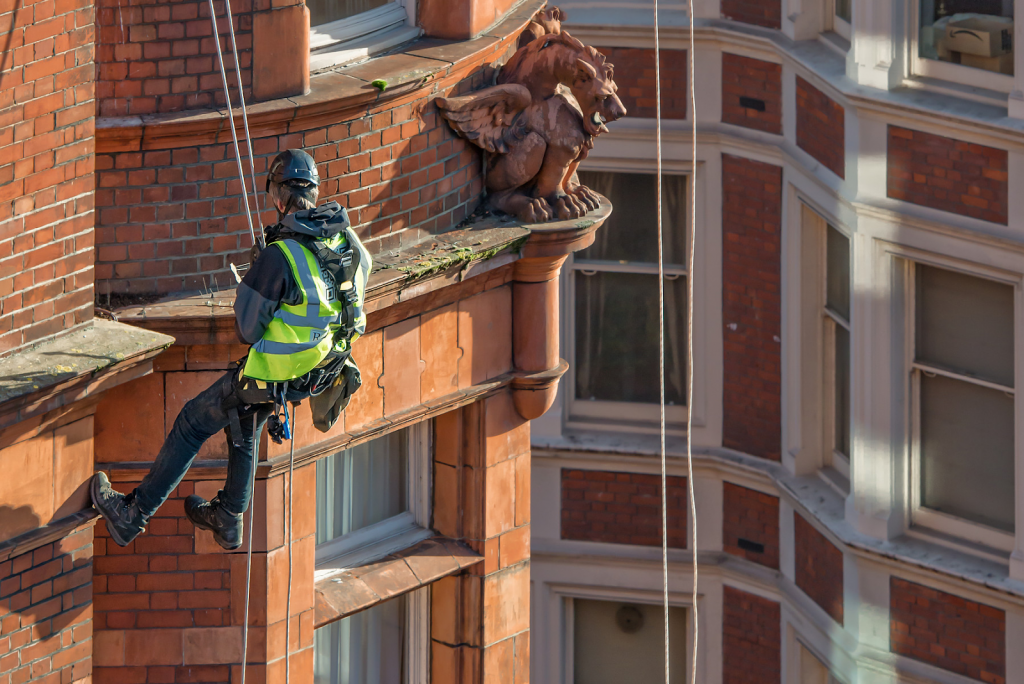
Working at height remains one of the most hazardous activities across construction, maintenance, and industrial sectors. The condition of equipment used for working at height can mean the difference between life and death.
The responsibility for ensuring equipment remains in suitable condition extends far beyond a simple visual check before use. It encompasses a comprehensive approach to inspection, maintenance, storage, and record-keeping that must be embedded into every aspect of working at height operations.
This article explores the critical elements of equipment management, drawing upon our extensive experience in rope access and height safety across diverse sectors.
What Does “Suitable Condition” Actually Mean for Height Safety Equipment?
The term “suitable condition” carries significant weight in health and safety legislation. Yet, its practical application requires careful consideration.
Equipment in suitable condition must be fit for its intended purpose, free from defects that could compromise safety, and appropriate for the specific working environment and tasks being undertaken.
Legal and Regulatory Framework
Under the Work at Height Regulations 2005, employers have a legal duty to ensure that equipment used for working at height is inspected by a competent person at suitable intervals and each time exceptional circumstances could have affected its safety.
When we carry out cladding installations or waterproofing projects, we recognise that regulatory compliance forms the foundation of our operational standards. But our commitment extends well beyond minimum legal requirements.
Equipment must meet relevant British Standards and European Norms (EN standards). For instance, harnesses must comply with EN 361, lanyards with EN 354, and energy absorbers with EN 355.
We ensure that all equipment used for our building surveying, cleaning, and glazing services meets or exceeds these standards, with certification documentation maintained for every piece of kit.
Defining Fitness for Purpose
Suitable condition also means the equipment must be appropriate for the specific task and environment. The rope access systems we employ for industrial work on oil and gas rigs face vastly different environmental challenges compared to those used for bird protection installations on residential buildings.
Salt spray, extreme temperatures, chemical exposure, and UV degradation all affect equipment differently. We carefully select equipment based on manufacturer specifications that account for these variables, ensuring each item is genuinely fit for its intended application.
How Can Pre-Use Inspections Prevent Equipment Failure?
Pre-use inspections form the first and most crucial line of defence against equipment failure. Every member of our team is trained to conduct thorough pre-use checks before commencing any task.
The Three-Stage Inspection Approach
Many companies implement a three-stage inspection protocol.
The first stage involves a visual inspection of all equipment immediately before use. Technicians examine ropes for cuts, abrasions, or heat damage; check harnesses for torn stitching, corroded buckles, or damaged webbing; and inspect karabiners for cracks, sharp edges, or gate malfunctions.
The second stage involves a tactile inspection, where technicians run their hands along ropes and webbing to detect internal damage that may not be visible to the eye.
The third stage is a functional test. Karabiners are opened and closed to ensure gates function smoothly and lock properly. Descenders and ascenders are tested for smooth operation. Anchor slings are checked for proper load distribution.

Why Is Periodic Detailed Inspection Non-Negotiable?
Whilst pre-use checks are essential, they cannot replace thorough periodic inspections by competent persons. The Work at Height Regulations mandate these detailed inspections at intervals appropriate to the equipment type and usage intensity, typically ranging from three to twelve months.
Establishing Inspection Intervals
The frequency of detailed inspections should reflect the equipment’s exposure to wear, environmental conditions, and usage patterns. Equipment used daily in harsh conditions requires more frequent inspection than equipment used occasionally in controlled environments.
For high-use items like the harnesses and lanyards, it’s common practice to implement quarterly inspections. Specialized equipment used less frequently, such as confined space rescue equipment or certain industrial rigging hardware, may be inspected bi-annually.
The Competent Person’s Role
A competent person possesses the necessary training, experience, and knowledge to identify equipment defects and assess their significance.
At RAIL, our technicians have undertaken manufacturer-approved training courses, hold relevant industry qualifications, and maintain continuous professional development.
During detailed inspections, they examine equipment using specialized tools and techniques unavailable during routine pre-use checks.
Each item is inspected against manufacturer specifications and industry best practice, with findings recorded in equipment loggers or digital tracking systems.
How Does Training and User Competency Affect Equipment Condition?
The most meticulously maintained equipment can be compromised by improper use. User competency directly impacts equipment longevity and, more importantly, safety outcomes.
Integrating Equipment Care into Skills Training
When training our painters, cleaners, welders, and other specialists in rope access techniques, equipment care forms a core component of the curriculum. Technicians learn not only how to use equipment correctly but also how their actions affect equipment condition.
They understand that walking on ropes, creating tight bends around small radius anchors, or allowing equipment to contact sharp edges causes immediate damage that significantly reduces strength and service life.
Proper rigging techniques minimize equipment stress and extend service life. Using appropriate padding at edge transitions, ensuring correct orientation of karabiners, and avoiding shock loading all contribute to equipment preservation.
Conclusion
Ensuring equipment for working at height remains in suitable condition requires a comprehensive management system encompassing selection, inspection, maintenance, storage, training, and culture.
Working at height will always carry inherent risks, but equipment-related failures are largely preventable through disciplined management and unwavering commitment to standards.


















